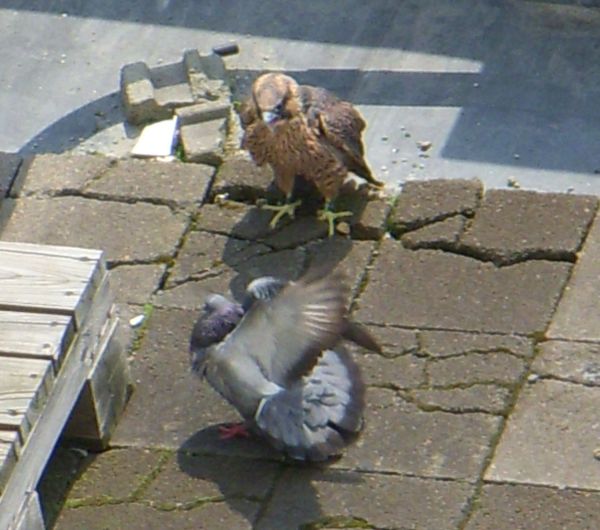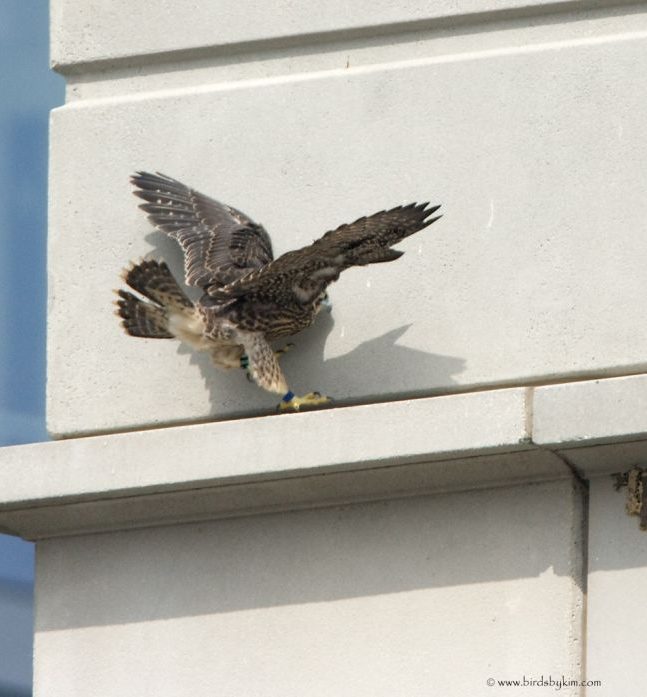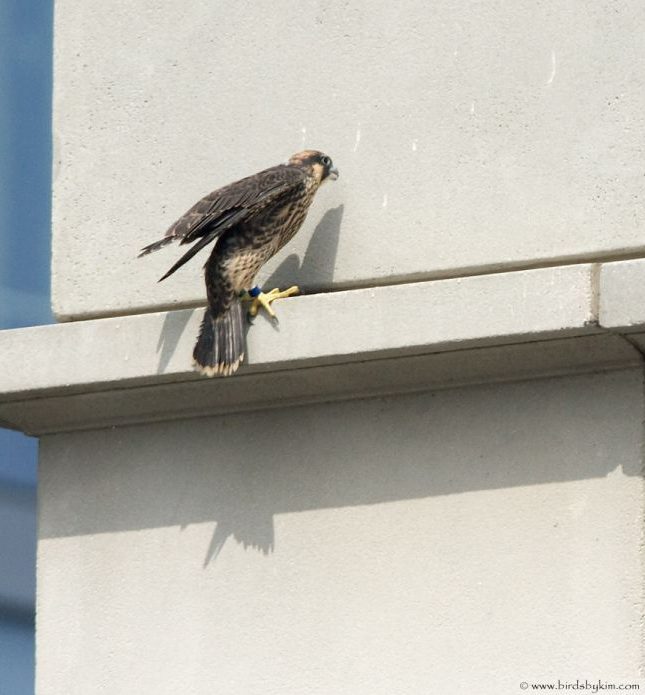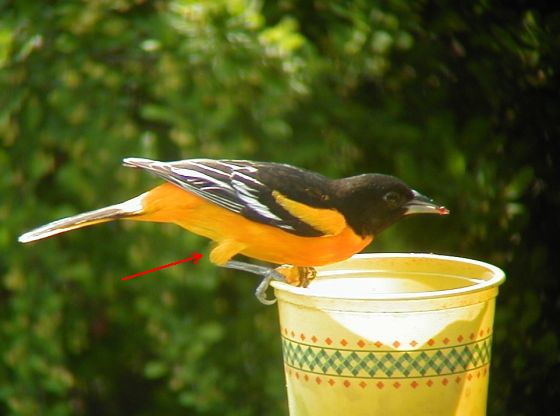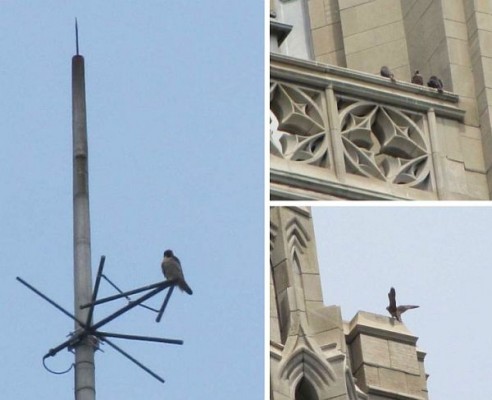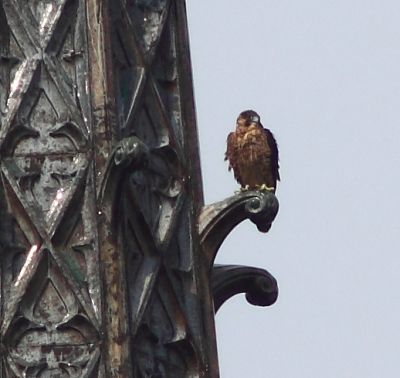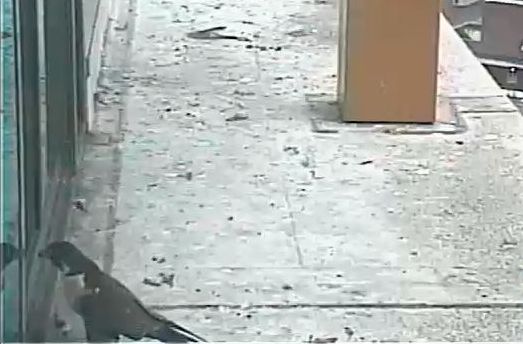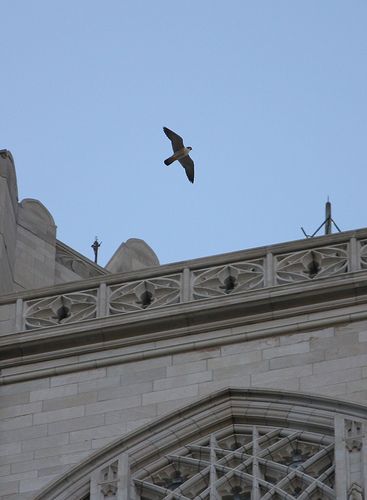 The young peregrines at the University of Pittsburgh are flying and doing well. Sometimes they play games in the air, chasing each other and pretending to exchange food. They also chase their parents.
The young peregrines at the University of Pittsburgh are flying and doing well. Sometimes they play games in the air, chasing each other and pretending to exchange food. They also chase their parents.
Needless to say Dorothy and E2 are busy trying to keep the “kids” fed.
Steve Valasek captured this photo of Dorothy on Sunday as she checked on their whereabouts.
And this morning Jack and Sue Solomon saw one of the adults (I’ll bet it was E2) at Duck Hollow on the Monongahela River, plucking a meal as he flew toward the Cathedral of Learning.
Busy, busy!
The youngsters are still staying close to home so you’re likely to see them if you come to campus.
Check the lower roof edges of the Cathedral of Learning or the steeple on Heinz Chapel and you’ll probably find a peregrine.
.
p.s. June 9, 2:00pm: The juveniles were perched on both steeples of St. Paul’s Cathedral. They’re widening their range.
June 11, 8:30am: Four juveniles have been hanging out at St. Paul’s Cathedral, Webster Hall and an apartment building nearby — seen yesterday at lunch and this morning before work.
(photo by Steve Valasek)
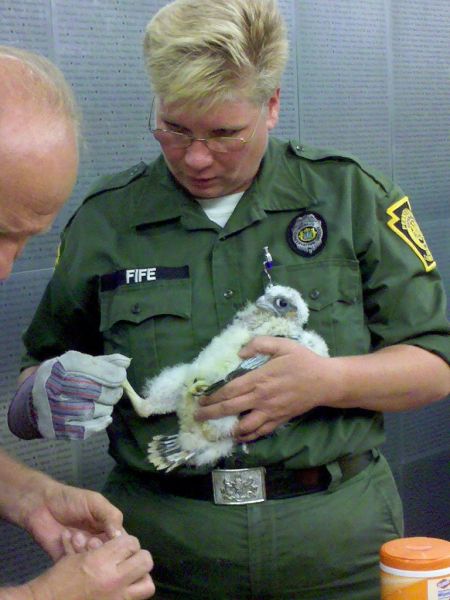 If you were watching the Gulf Tower webcam between 9:00am and 10:00am this morning you’ll have noticed a lot of excitement.
If you were watching the Gulf Tower webcam between 9:00am and 10:00am this morning you’ll have noticed a lot of excitement. 